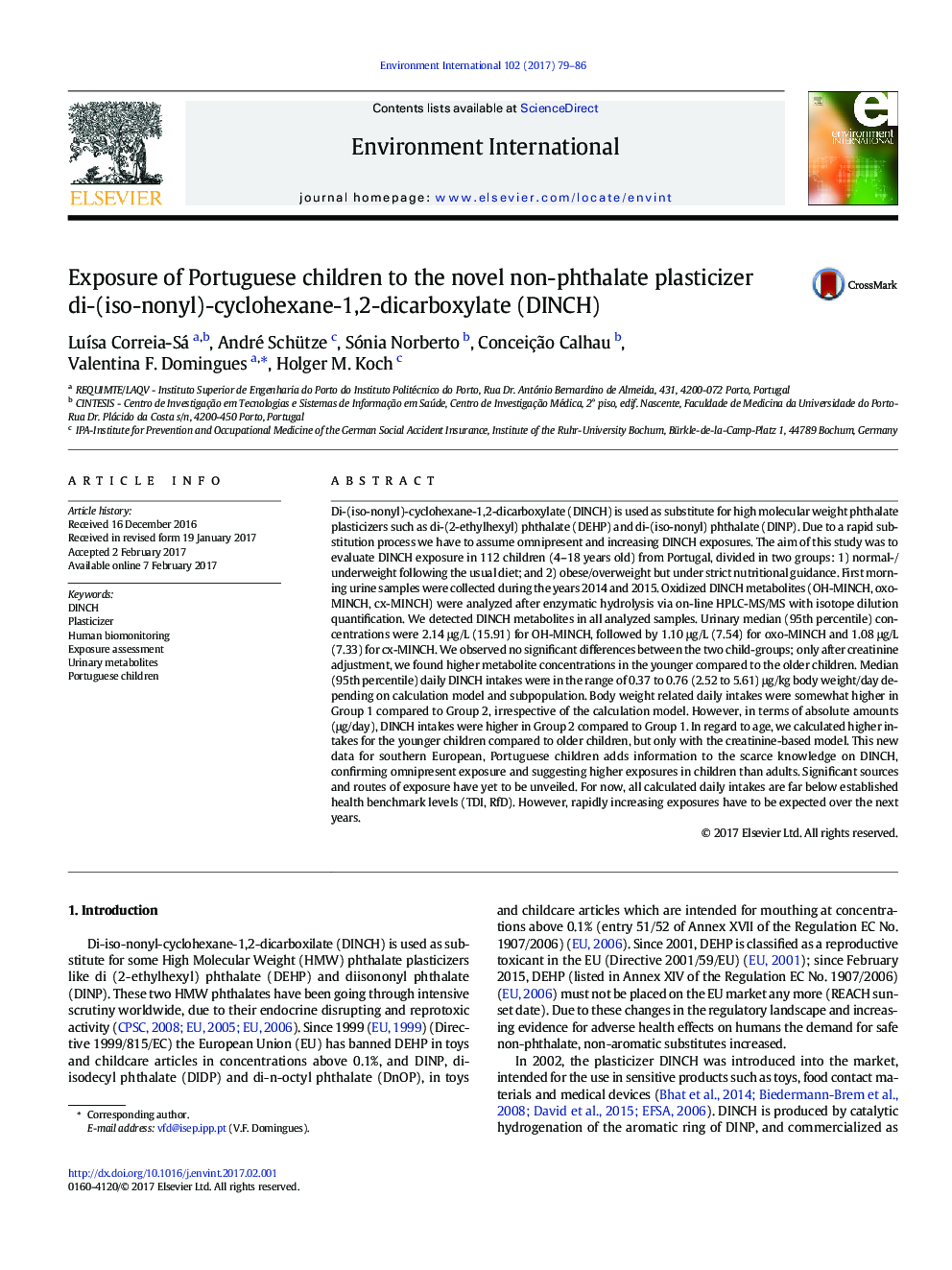| کد مقاله | کد نشریه | سال انتشار | مقاله انگلیسی | نسخه تمام متن |
|---|---|---|---|---|
| 5748248 | 1619028 | 2017 | 8 صفحه PDF | دانلود رایگان |

- DINCH was analyzed for the first time in a Southern European population.
- DINCH metabolites were detectable in 100% of the analyzed urine samples (n = 112) from Portuguese children.
- Children are exposed at approximately 5-times higher levels than adults.
- Lower DINCH exposures were observed in children with nutritional guidance.
Di-(iso-nonyl)-cyclohexane-1,2-dicarboxylate (DINCH) is used as substitute for high molecular weight phthalate plasticizers such as di-(2-ethylhexyl) phthalate (DEHP) and di-(iso-nonyl) phthalate (DINP). Due to a rapid substitution process we have to assume omnipresent and increasing DINCH exposures. The aim of this study was to evaluate DINCH exposure in 112 children (4-18 years old) from Portugal, divided in two groups: 1) normal-/underweight following the usual diet; and 2) obese/overweight but under strict nutritional guidance. First morning urine samples were collected during the years 2014 and 2015. Oxidized DINCH metabolites (OH-MINCH, oxo-MINCH, cx-MINCH) were analyzed after enzymatic hydrolysis via on-line HPLC-MS/MS with isotope dilution quantification. We detected DINCH metabolites in all analyzed samples. Urinary median (95th percentile) concentrations were 2.14 μg/L (15.91) for OH-MINCH, followed by 1.10 μg/L (7.54) for oxo-MINCH and 1.08 μg/L (7.33) for cx-MINCH. We observed no significant differences between the two child-groups; only after creatinine adjustment, we found higher metabolite concentrations in the younger compared to the older children. Median (95th percentile) daily DINCH intakes were in the range of 0.37 to 0.76 (2.52 to 5.61) μg/kg body weight/day depending on calculation model and subpopulation. Body weight related daily intakes were somewhat higher in Group 1 compared to Group 2, irrespective of the calculation model. However, in terms of absolute amounts (μg/day), DINCH intakes were higher in Group 2 compared to Group 1. In regard to age, we calculated higher intakes for the younger children compared to older children, but only with the creatinine-based model. This new data for southern European, Portuguese children adds information to the scarce knowledge on DINCH, confirming omnipresent exposure and suggesting higher exposures in children than adults. Significant sources and routes of exposure have yet to be unveiled. For now, all calculated daily intakes are far below established health benchmark levels (TDI, RfD). However, rapidly increasing exposures have to be expected over the next years.
151
Journal: Environment International - Volume 102, May 2017, Pages 79-86